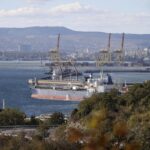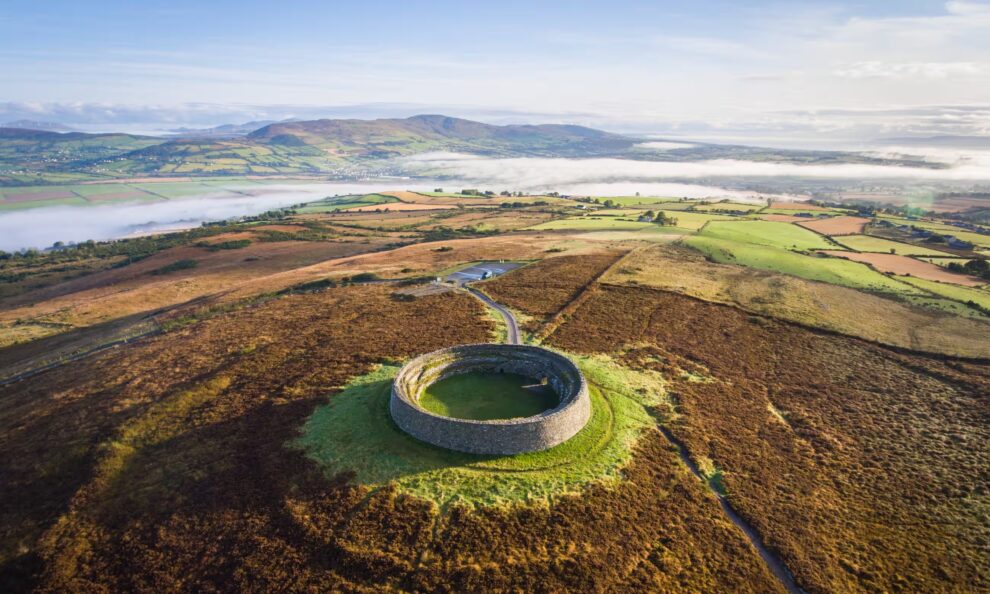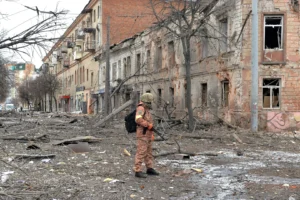The Rock of Cashel, a medieval stronghold that once served as the seat of Ireland’s kings, is undeniably magnificent. Perched high on an outcrop overlooking lush Tipperary farmland, its round towers, high crosses and 13th-century Gothic cathedral attract a steady stream of visitors. But it’s not the only Irish castle or abbey to draw large crowds. Even off season, there are long queues for internationally recognised sites such as Bunratty, Clonmacnoise, Glendalough, Dunluce, Blarney and Kylemore. Unesco-designated world heritage site Skellig Michael (famous as Luke Skywalker’s island sanctuary in Star Wars) has limited access, and other ancient buildings have been made into five-star hotels.
But this is a country where a castle or abbey can appear around almost every windswept corner, so there are thousands of off-the-radar places to visit. These sites have equally impressive architecture, and possibly even more intriguing backstories, but a noticeable absence of tour buses and crowds because they haven’t featured on the big or small screen – yet. In most cases, you’ll share the space with just a handful of Hibernophiles. With that in mind, we’ve selected eight of the best lesser-known abbeys and castles in Ireland dating from the seventh and to the 19th centuries.
This 23-metre wide, five-metre-high hill fort was, for a period, the stronghold of the Ó Néills, one of Ireland’s most powerful dynasties until the end of the Gaelic order and Brehon Law in 1603. The circular fortress is one of the finest examples of pre-Norman architecture in the country, with 4½-metre-thick dry-stone walls. An entrance passage leads to an arena with tiered stone steps along the perimeter that climb to a series of terraces. Even by today’s standards the building is impressive. Its hilltop location 250 metres above sea level means epic views over hills, valleys and both Lough Swilly and Lough Foyle – where Viking fleets entered the Inishowen peninsula in search of trouble, only to be stripped of their gold by local warriors. The site dates back to much earlier inhabitation more than 3,000 years ago. A holy well behind the fortress is named after Saint Patrick – in the fifth century he reputedly baptised Owen (Eoghan– a local prince who lent his name to the Inishowen peninsula. Afterwards, head along Lough Swilly’s coast and linger at the Railway Tavern, a former station house, for sustenance.
The seven wonders of Fore relate to the construction stage of Fore Abbey and strange manifestations in the local landscape, from rivers flowing uphill to the boggy terrain that carried the foundation. These days, it’s hard to imagine that this network of ruins in a remote valley was once a thriving centre of education, home to 300 monks and thousands of students. Best guess has it that this medieval monastic complex was established by St Féichín in 630. He died, along with a good portion of his flock, from yellow fever some years later, which brings us to a first anomaly.
These days, it’s hard to imagine that this forlorn network of ruins in a remote valley was once home to 300 monks and thousands of students
The seventh miracle occurred, apparently, when St Féichín raised a two-tonne stone doorway lintel into place by the power of prayer in the 10th century – when he had been dead some time. Despite the time travel issues, the lintel remains in place to this day. Other idiosyncratic features include a hermit’s cell and a fine cloister arcade built later as part of a Benedictine priory by landlord Hugh De Lacy, who also constructed Trim Castle (a setting for the movie Braveheart) about 20 miles away. A marked trail around Fore covers most of the sights, and it is a remarkably beautiful setting. In Fore village is something else that hasn’t changed in a while – the Seven Wonders Pub.
Rising from the contours of a high outcrop and visible for miles from the plains of Laois, Dunamase’s courtyard walls offered an excellent defence for the most important and impressive palace in the county. Today it’s difficult to see where natural rock ends and the man-made structure begins because the buildings, liked cracked teeth, have almost set into the rocky pedestal and weathered over time. Even the barbican, or entrance, is etched into a ditch, so the place has the air of something that emerged organically over the centuries. Kings of Laois sat here from AD845, until a wave of Viking invasions annihilated that chapter of the rock’s history. It was only when Isabel, daughter of Irish and Norman power couple Aoife MacMurrough and Richard “Strongbow” de Clare, occupied the castle in the early 13th century that the site returned to prominence. Irish Brehon Law, which was stamped out 400 years later under English rule, was progressive in matters of sexuality, divorce and female rights – so property could pass from parent to daughter. Dunamase passed through generations of daughters, just like the castle of Gráinne Mhaol (better known as the pirate queen Grace O’Malley of Co Mayo) in the 16th century. Eventually the Rock of Dunamase was abandoned in the late 14th century and virtually destroyed by Cromwellian troops during a siege in 1650.
This abbey (officially a friary but always referred to as an abbey) is in pretty Quin Village, a remote hamlet lost in a maze of country lanes. A three-arch bridge and narrow streets curve around the abbey ruin, church and a crumbling chapel, as if to keep watch on the comings and goings along the meadow path to the abbey. The trail closely follows the gushing Rine River through bumpy terrain, where an ancient town settlement has lain buried beneath the tufts of grass for centuries. The abbey started life in 1278 as a giant fortress, built by Thomas de Clare. He was an Anglo Norman peer who spectacularly failed to subdue the local chieftains – decades before, his castle was almost completely razed by the O’Brien clan.
To the right of the nave is the grave of Fireball McNamara, while in another vault lie the notorious Blood clan, connected to the Tower of London crown jewel thief
The castle’s round battlements and sturdy walls form part of the 15th-century McNamara Franciscan Abbey, and ooze history. To the right of the nave is a transept with the 19th-century grave of Fireball McNamara, the last McNamara chieftain and hell-raising sidekick of politician and Catholic emancipation leader Daniel O’Connell. Etched on to the scorched south wall of the chancel is the shape of a crucifix desecrated by Cromwellian forces. Just by the neat, perfectly formed cloister are the vaults of the Butlers or Lord Dunboyne dynasty. They were a strand of a powerful family who lived in nearby Knappogue Castle – while in another vault lie the notorious Blood clan from Ballykilty Manor, connected to the Tower of London crown jewel thief. The Abbey Tavern across from the friary is the place to raise a glass to the complicated past.
Source : The Guardian











